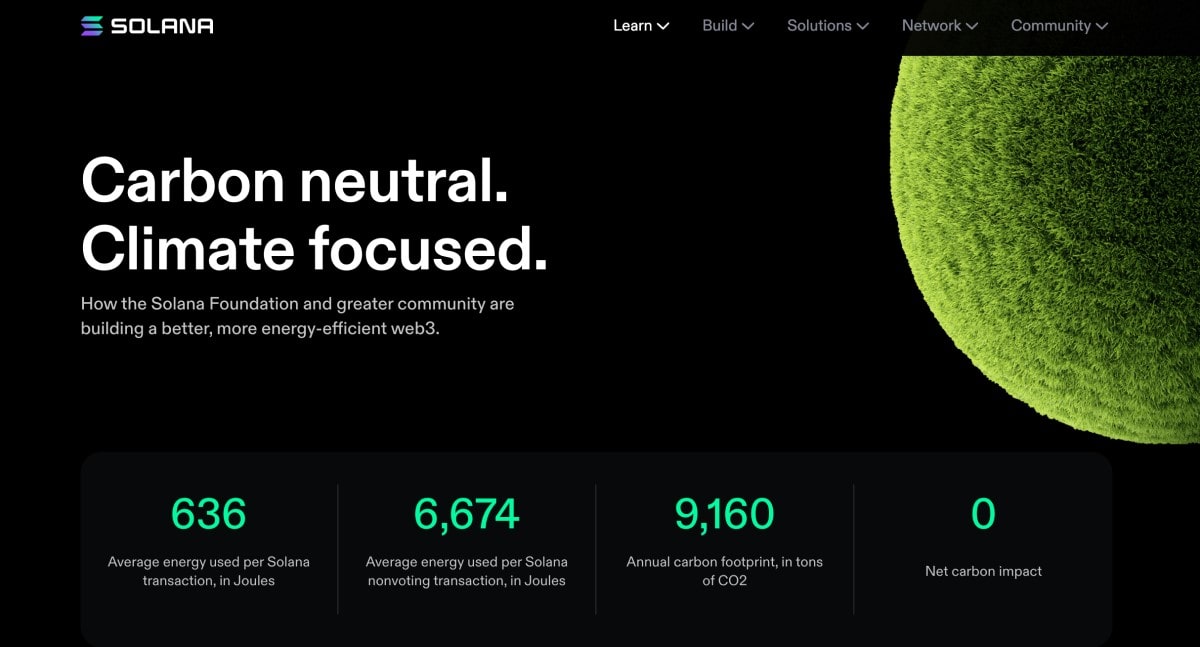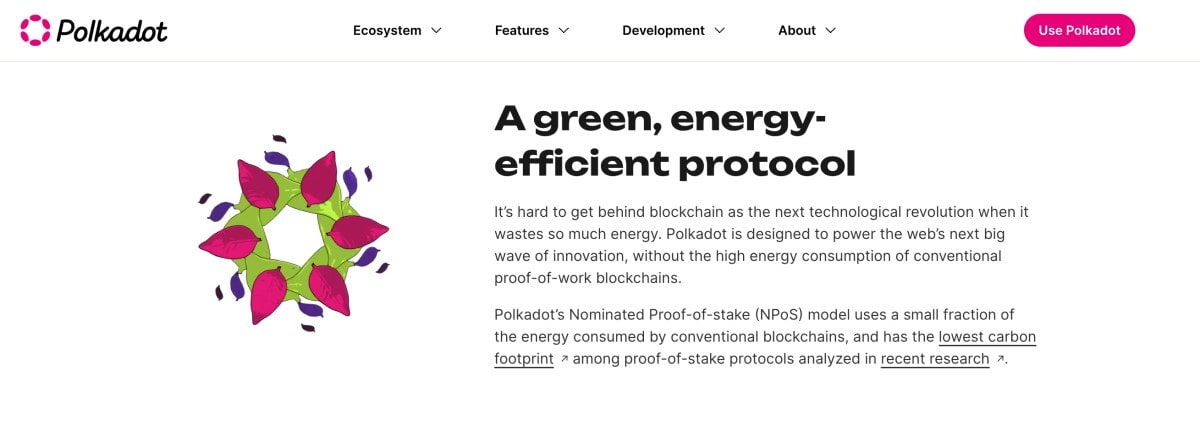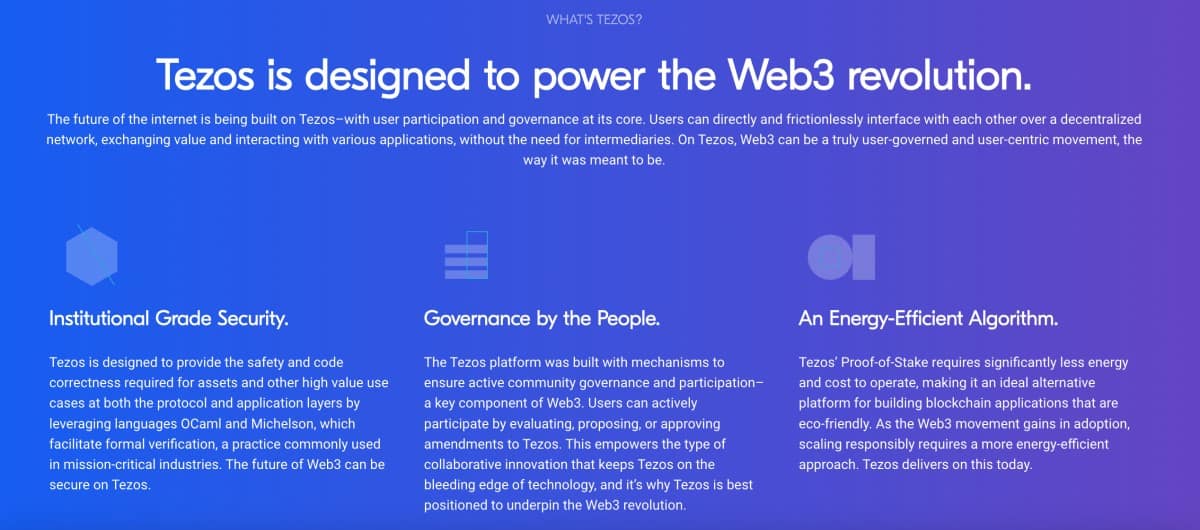Green Cryptocurrency: Attempts to Reduce Environmental Impact

The cryptocurrency ecosystem is significantly transforming towards a more sustainable and environmentally friendly future. This shift is driven by various factors, including the increasing use of renewable energy sources for cryptocurrency mining and the transition from proof-of-work (PoW) to proof-of-stake (PoS) consensus models. These changes pave the way for a new generation of green cryptocurrency. In this blog, we will delve into the key developments and trends shaping the greener future of cryptocurrencies.
What Is Green Cryptocurrency?
Unlike traditional currencies, green tech cryptocurrency uses fewer resources and energy, aiming for a lower environmental impact and greater ecosystem friendliness. Green energy cryptocurrency is designed to operate with renewable energy sources such as solar, wind, and hydroelectric power.
One notable advantage is the typically low transaction fees associated with green cryptocurrencies, reducing transaction energy consumption and ultimately contributing to an eco-friendlier approach.
With the increasing concerns about global warming and the offsetting of CO2 emissions across industries, the cryptocurrency sector, particularly Bitcoin, has faced criticism for its substantial energy consumption. Consequently, the following section will explore the benefits green cryptocurrencies can bring to the market.
Green Tech Cryptocurrency Benefits

Green tech cryptocurrencies provide several advantages:
- Energy Efficiency. These cryptocurrencies prioritise energy efficiency to minimise their carbon footprint. This is achieved through Proof of Stake (PoS), which consumes significantly less energy than the traditional Proof of Work (PoW) model.
- Renewable Energy. The cryptocurrency industry is increasingly adopting renewable energy sources for mining, reducing its environmental impact and promoting sustainability.
- Sustainability. Sustainability is becoming a critical factor in the future of the blockchain sector. Green cryptocurrencies are designed to uphold the blockchain's integrity while being energy-efficient and reducing carbon footprint.
- Innovation. The emergence of green cryptocurrencies has spurred innovative solutions to decrease the energy consumption of blockchain technology.
- Environmental Benefits. Rather than harming the environment, green tech cryptocurrencies can contribute positively to environmental preservation. They signify a shift towards a cleaner, greener, and more sustainable future.
Top Green Cryptocurrency
What is the most "green cryptocurrency"? Let's check out our green cryptocurrency list to find out which assets are gaining popularity as the most eco-friendly.
- Chia Network (XCH) is a distinctive green cryptocurrency that offers a more sustainable and efficient option than traditional cryptocurrencies. It uses a less energy-intensive consensus mechanism to enhance proof-of-stake (PoS) and proof-of-work (PoW). The network achieves Nakamoto consensus by integrating proof-of-space (PoS) with proof-of-time (PoT), each operating uniquely.
- Nano (NANO) stands out as a green energy crypto token thanks to its intentional focus on sustainability and energy efficiency. While many other cryptocurrencies rely on energy-intensive mining, Nano uses a unique voting system that eliminates the need for mining, thus improving its energy efficiency. A single Nano transaction consumes only 0.111 Wh, significantly less than other digital currencies, contributing to Nano's eco-friendly reputation. Its minimal infrastructure footprint, supported by a few machines, reduces data storage and ensures speedy transactions. Nano's fee-free transactions make it a practical and inclusive choice for all users.
Bitcoin Energy Consumption
The Bitcoin industry alone consumes over 198 terawatt-hours (TWh) of electricity annually, comparable to the energy consumption of countries like Thailand. Bitcoin's high energy consumption is mainly due to its inefficient mining system, known as Proof-of-Work (PoW). In this system, dedicated computers solve complex mathematical problems to verify transactions within the decentralised structure. Miners compete to certify transactions first and are rewarded with bitcoins.
As more miners compete, the mathematical problems become increasingly complex, requiring greater electrical and computational energy to reap the rewards. This results in a significant amount of energy wasted by the hundreds of thousands of computers failing to win the competition.
Crypto Mining Environmental Effect
The process of computers on a peer-to-peer network finding consensus in updating a shared ledger (mining) makes blockchain technology unique. Before blockchain, computers on a peer-to-peer network could only collaborate with the help of a central authority.
In the case of initial blockchains like Bitcoin and Ethereum, the consensus among computers on their networks was achieved through a competitive and energy-intensive process of hashing data. The computer that completes this process updates the ledger for the rest.
As a result, mining has evolved into a profitable business enterprise with a wide range of applications, from NFTs to cryptocurrencies and other digital assets. However, the energy consumption involved in mining is a significant cost, while the rewards are the revenue.
Like other business enterprises, miners are motivated to minimise their costs, often using the cheapest available energy. Unfortunately, this energy often comes from fossil fuels, which generate substantial greenhouse gases. Even when blockchain networks use green energy sources, they can strain energy generators and divert resources from other vital facilities. Over time, this could impede the overall transition to energy efficiency in the economy.
Green Blockchain Technologies
A green blockchain is a blockchain that minimises its contribution to climate change by reducing greenhouse emissions through its consensus mechanism. To achieve this, a blockchain must require minimal energy to process transactions or ensure its users exclusively utilise green energy sources.
Minimising energy consumption is the more practical approach, as it is established at the protocol level, relieving stakeholders from managing individual carbon footprints. However, this approach may compromise certain security aspects.
Alternatively, restricting the network's energy use to specific sources presents challenges, as it cannot be directly integrated into the protocol. Instead, individual miners must choose to utilise green energy, which may conflict with profit incentives. This could lead them to prioritise cheaper energy sources, regardless of their environmental impact.
Development Trends

Green cryptocurrencies are implementing new methods to reduce the environmental impact of blockchain technology, offering potential solutions for more sustainable practices within the cryptocurrency industry. For example, Ethereum, the platform behind non-fungible tokens (NFTs), aims to drastically decrease its energy consumption by 99.5% through a Proof-of-Stake (PoS) consensus mechanism.
The challenge of integrating sustainability into the complex dynamics of cryptocurrencies - involving decentralisation, security, and scalability - has prompted experts to propose several strategies for making cryptocurrencies more environmentally friendly.
- Transitioning to renewable energy sources is crucial in addressing the carbon emissions associated with cryptocurrency mining. In 2021, less than 40% of bitcoins verified through Proof of Work were mined using renewable energy, prompting the emergence of startups with innovative approaches to tackle this issue.
- Adopting the Proof-of-Stake (PoS) consensus mechanism eliminates the competitive computational aspect of Proof-of-Work, reducing energy consumption while maintaining transaction verification integrity. Miners must stake a small number of cryptocurrencies to participate in a lottery for transaction verification assignments, effectively reducing the risk of approving fraudulent transactions.
- Integrating "pre-mining" operates similarly to creating and distributing fiat currencies or company shares, where a central authority mints a specific amount of cryptocurrencies based on global and business factors. Decentralised miners still verify transactions, with users potentially compensating miners with small fees for their work.
- Furthermore, introducing carbon credits for cryptocurrency mining companies could involve purchasing credits from other businesses to offset emissions or transitioning to greener energy sources, contributing to global emission reduction efforts.
Green Crypto Mining Examples
Here are the top environmentally-friendly cryptocurrencies in the market. These digital assets prioritise energy efficiency and promote inclusivity to drive greater adoption of blockchain technology.
Green Coin Cryptocurrency Examples
Following our green cryptocurrency list previously mentioned in this article, let's consider several of the top green cryptocurrency projects for 2024.
Bitcoin Minetrix

Bitcoin Minetrix has introduced an innovative stake-to-mine concept into its ecosystem, enabling users to mine Bitcoin through a tokenised system. By staking BTCMTX tokens on the platform, users can receive mining credits, which they can exchange for cloud mining power. The project aims to transform the cloud mining infrastructure, providing a decentralised way for everyday users to mine BTC while eliminating the risk of third-party mining scams. Cloud mining allows users to mine BTC without owning or managing costly mining equipment. Through the stake-to-mine mechanism, Bitcoin Minetrix has the potential to decrease the energy consumption typically associated with traditional Bitcoin mining, making it a more environmentally friendly option.
Solana

Solana is a green planet crypto blockchain designed to address the limitations of Ethereum. While Ethereum was initially exclusive and groundbreaking as the first altcoin, it faced scalability challenges due to its proof of work mechanism, resulting in increased transaction fees during network congestion. In contrast, Solana's architecture enables it to process nearly 65,000 transactions per second at a minimal fee.
In 2021, Solana achieved a significant milestone in environmental sustainability by becoming carbon neutral, marking a pivotal moment in its commitment to creating a compact, rapid, and efficient blockchain. Utilising the Proof of History Consensus, a single Solana transaction consumes only 2707 Joules of energy, significantly lower than the 7.4 billion joules required for a Bitcoin transaction.
Polkadot

Polkadot is geared to fuel the next wave of web innovation while consuming significantly less energy than traditional proof-of-work blockchains. Its advanced nominated proof-of-stake (NPoS) model makes this possible, resulting in an energy consumption equivalent to only about ~6.6 US households per year. Polkadot boasts the lowest carbon footprint among proof-of-stake protocols.
One of Polkadot's groundbreaking features is its focus on blockchain interoperability, enabling seamless transfer of crypto assets between different blockchains. This fosters an inclusive ecosystem where various chains can interact.
Cardano

Cardano (ADA) is known as a green tech cryptocurrency because of its focus on sustainability and energy efficiency. Unlike Bitcoin, which relies on a proof-of-work consensus mechanism, Cardano utilises a proof-of-stake mechanism, making it inherently more energy efficient. The founder of Cardano asserts that the cryptocurrency network consumes only 6 GWh of power, a notably lower amount compared to numerous other cryptocurrencies.
Agricultural companies actively use Cardano to trace fresh produce from the field to the consumer's table and by retailers to combat counterfeit goods. It facilitates the secure storage of educational credentials in a tamper-proof manner.
Tezos

Tezos' Proof-of-Stake offers a significantly more energy-efficient and cost-effective operation, positioning it as an excellent platform for developing eco-friendly blockchain applications. As the Web3 movement grows, responsible scaling necessitates a more energy-efficient approach, which Tezos currently provides.
Tezos is a versatile cryptocurrency that enables users to engage in DeFi (Decentralised Finance) and dApps (decentralised applications). The ecosystem also accommodates NFTs in an environmentally friendly manner, addressing concerns about their high energy consumption raised by prominent publications and experts. Due to its environmentally conscious approach to NFTs, Tezos recently partnered with Rarible.
Bitgreen

Bitgreen is a platform focusing on sustainability, impact, and decarbonisation. It rewards users for making choices that reduce their carbon footprints and offers incentives for shopping with sustainable and local vendors. The platform aims to foster community growth while minimising environmental harm. Bitgreen operates as a scalable cryptocurrency that enables the issuance and purchase of transparent carbon credits, benefiting local communities and contributing to nature conservation and CO2 removal. These attributes establish Bitgreen as a green tech cryptocurrency, distinguished by its emphasis on rewarding eco-friendly decisions and promoting sustainable practices.
Transition to Green Planet Crypto
Most crypto communities agree that the energy consumption of networks like Bitcoin could have long-term environmental impacts. However, they also recognise that the proof of work consensus mechanism makes the cryptocurrency unique and extremely valuable. In the case of specific projects like Bitcoin, the widely accepted solution is to encourage miners to shift from using fossil fuel-derived energy to green energy sources.
The green cryptocurrency movement showcases the blockchain community's dedication to sustainability. As cryptocurrencies and blockchain technology advance, their ability to promote positive environmental impact becomes more evident. By embracing eco-friendly approaches, shifting to energy-efficient consensus mechanisms, and engaging in carbon offsetting initiatives, blockchain technology leads the path towards a greener, more sustainable future where innovation and environmental awareness work together.
Tags
Try our Bitcoin Cloud Miner and get additional crypto rewards based on your trading volume. It's immediately available upon registration.
Try our Bitcoin Cloud Miner and get additional crypto rewards based on your trading volume. It's immediately available upon registration.



